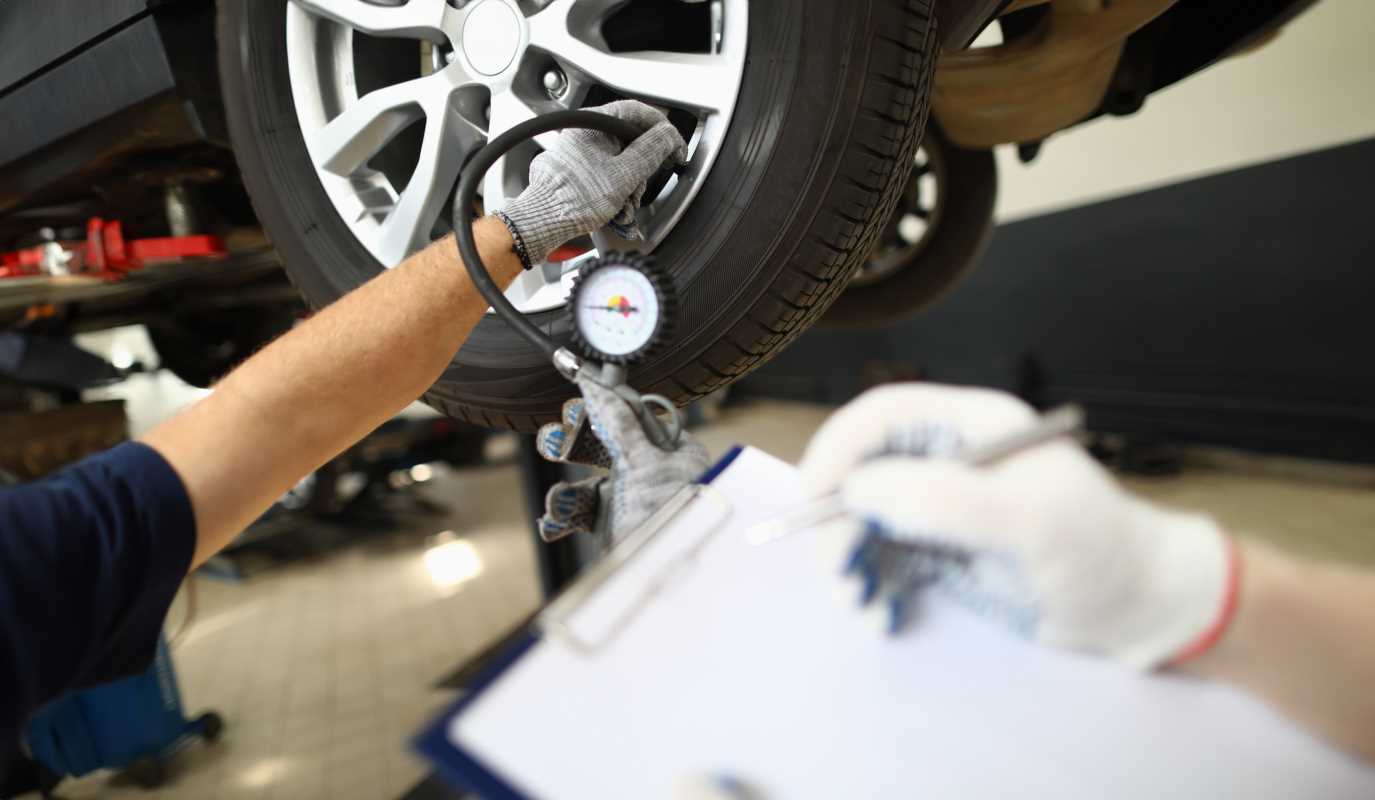Your tires are one of the most important investments you make in your vehicle, directly impacting its safety, fuel efficiency, and overall performance. Getting the most mileage out of them is a goal every car owner shares. While regular maintenance like tire rotations and alignments are well-known, there is one simple, inexpensive tool that plays a massive role in extending tire life, and it's something you can easily use yourself. Many drivers overlook this fundamental piece of equipment, but you have the power to take control. Learning about this tool and how to use it is an empowering step that helps you save money, improve your car's safety, and become a more confident driver.
The Hidden Danger of Improperly Inflated Tires
Before we reveal the tool, it's important to understand the problem it solves. The air inside your tires supports the entire weight of your vehicle. The correct amount of air, or tire pressure, is crucial for optimal performance. When your tires are underinflated or overinflated, it leads to a host of problems that can be both dangerous and costly.
Underinflation: The Most Common Culprit
Underinflation is the most frequent issue. When a tire doesn't have enough air, its sidewalls flex too much, and the center of the tread can lift away from the road. This forces the outer edges of the tire to handle all the work. This causes rapid, uneven tread wear on the shoulders of the tire, significantly shortening its lifespan.
More importantly, underinflation generates excessive heat. The constant flexing of the sidewalls creates friction and heat buildup, which can lead to a sudden and catastrophic tire failure, or a blowout. It also reduces fuel economy, as the engine must work harder to move the car on soft, squishy tires.
Overinflation: A Bumpy and Risky Ride
Overinflation presents its own set of problems. Too much air pressure causes the center of the tread to bulge out, lifting the outer edges off the road. This concentrates all the vehicle's weight on a narrow strip in the middle of the tire, leading to rapid wear in the center.
An overinflated tire has a smaller contact patch with the road, which reduces traction and can increase your stopping distance. It also makes for a harsh, bumpy ride because the stiff tire can't absorb road imperfections as it should.
The Essential Tool: The Tire Pressure Gauge
The one simple tool that can help you prevent all these issues and extend the life of your tires is a quality tire pressure gauge. This small, handheld device allows you to accurately measure the air pressure in your tires, giving you the information you need to keep them properly inflated. It's an inexpensive, easy-to-use tool that belongs in every car owner’s glove box.
There are three main types of tire pressure gauges:
- Stick/Pen Gauge: This is the most basic and compact type. It uses a small, calibrated rod that pops out to indicate the pressure. While very affordable, they can be less accurate than other types.
- Dial Gauge: This type features a round, analog dial with a needle that points to the pressure reading. They are generally more accurate and easier to read than stick gauges.
- Digital Gauge: These provide a precise, easy-to-read number on an LCD screen. They are often backlit, making them great for use in low-light conditions.
Any of these gauges will work well. The most important thing is that you have one and use it regularly.
How to Use a Tire Pressure Gauge: A Simple Guide
Checking your tire pressure is a quick and straightforward task that anyone can do. For the most accurate reading, always check the pressure when the tires are "cold"—meaning the car has been parked for at least three hours or driven less than a mile.
Step 1: Find Your Vehicle's Recommended Pressure
First, you need to know the correct pressure for your tires. This information is not on the tire itself. The number on the tire's sidewall is the maximum pressure the tire can hold, not the recommended pressure for your vehicle.
The correct tire pressure is listed on a sticker, usually located on the driver's side doorjamb. You might also find it in your vehicle's owner's manual. The pressure is measured in PSI (pounds per square inch). Note that the recommended pressure for front and rear tires may be different.
Step 2: Check the Pressure
Unscrew the small cap from the valve stem on one of your tires. Press the tire pressure gauge firmly onto the valve stem. You will hear a brief hiss of air as you connect it. Hold it there for a second or two until you get a stable reading.
- On a stick gauge, the calibrated rod will pop out. The number at the end of the rod is your pressure reading.
- On a dial gauge, the needle will point to the pressure in PSI.
- On a digital gauge, the screen will display the exact number.
Read the pressure and compare it to the recommended PSI on the doorjamb sticker. Don't forget to put the valve cap back on. Repeat this process for all four tires. It’s also a good idea to check your spare tire, as it can lose pressure over time, too.
Step 3: Adjust the Pressure as Needed
If a tire’s pressure is too low, you’ll need to add air. You can do this at most gas stations, which have air compressors. Add air in short bursts, rechecking the pressure with your gauge until you reach the recommended level.
If a tire’s pressure is too high, you can release air by pressing the small pin in the center of the valve stem with the tip of a key or the back of your gauge. Let air out in short hisses and recheck the pressure until it's correct.
The Financial Benefits of Proper Inflation
Using a tire pressure gauge regularly offers significant financial rewards that go far beyond just buying a new set of tires less often.
- Extended Tire Life: According to industry experts, a tire that is consistently underinflated by just 20% can have its tread life reduced by as much as 30%. For a set of tires that should last 50,000 miles, that’s a loss of 15,000 miles. Keeping them properly inflated ensures they wear evenly, maximizing their lifespan.
- Improved Fuel Economy: The U.S. Department of Energy reports that you can improve your gas mileage by up to 3% by keeping your tires properly inflated. While that sounds small, it adds up over a year of driving, putting money back in your pocket at every fill-up.
- Avoiding Costly Repairs: A blowout caused by an underinflated tire can lead to much more than just the cost of a new tire. It can cause you to lose control of your vehicle, potentially resulting in an accident and expensive body damage.
By investing just a few dollars in a tire pressure gauge and a few minutes of your time each month, you can save hundreds of dollars over the life of your vehicle.
This simple tool empowers you to take a proactive role in your car's maintenance. It’s a small step that brings big benefits in safety, savings, and peace of mind. You don't need to be a mechanic to ensure your tires are in great shape. With a tire pressure gauge in hand, you have everything you need to protect your investment and drive with confidence.
 (Image via
(Image via





